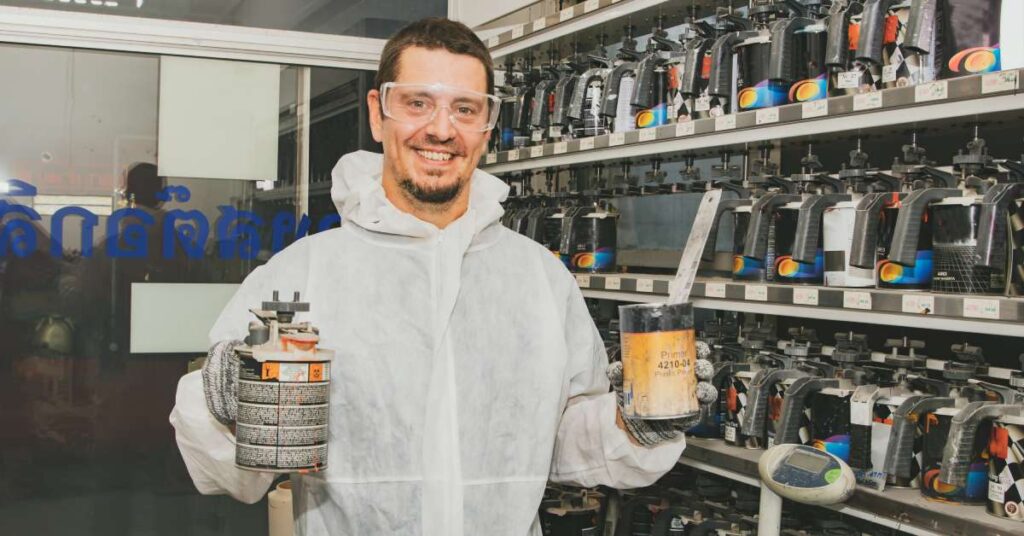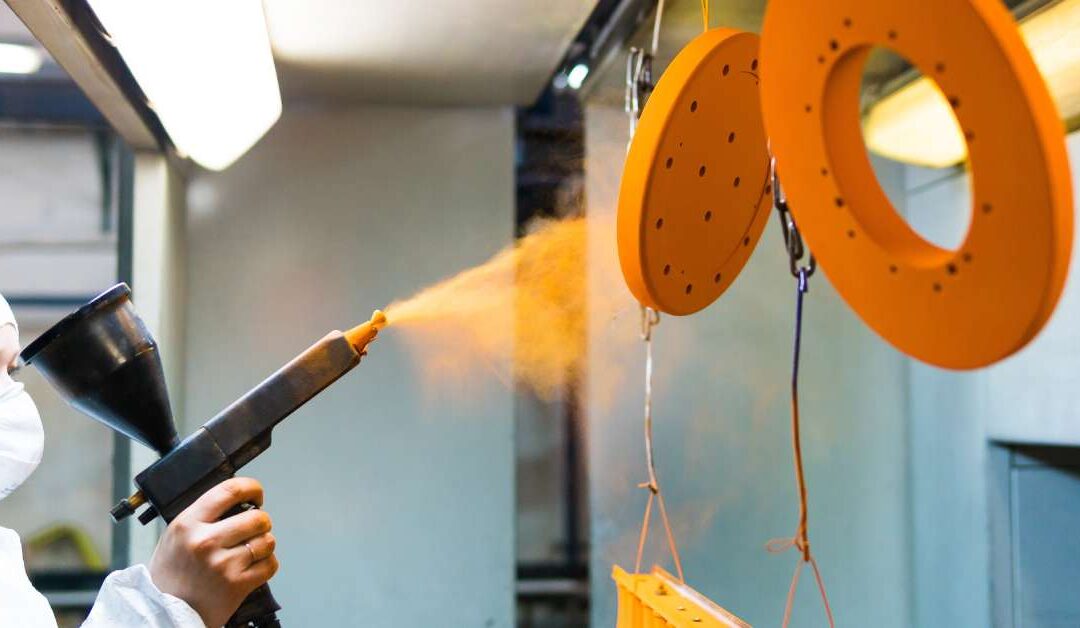Solvent compliance maintains safety and environmental standards in the painting and coating industry. Ensuring the proper use, handling, and disposal of solvents not only protects workers and the environment but also helps companies avoid legal and financial repercussions. Today, let’s explore the various aspects of solvent compliance in the painting and coating industry.
Understanding Solvents in the Painting and Coating
Solvents are substances that dissolve, suspend, or extract other materials without chemically changing either the solvents or the materials. In the painting and coating industry, different types of solvents serve various purposes.
- Organic solvents: These include hydrocarbons, alcohols, ketones, and esters. They are popular for their strong dissolving properties.
- Inorganic solvents: Examples include water and ammonia. They are less common in the industry but suit specific applications.
- Water-based solvents: These are environmentally friendly alternatives to traditional organic solvents. They’re best for waterborne paints and coatings.
Popular Industry Solvents
Acetone, toluene, xylene, and ethyl acetate are common solvents in painting and coating applications. Each has unique properties that make it suitable for specific tasks. For example, ethyl acetate is a versatile solvent that assists with the formulation of lacquers, enamels, and inks. Its ability to dissolve various resins makes it valuable in the production of coatings and adhesives.
Additionally, many paint manufacturers use toluene as a thinner for paints, coatings, and adhesives. Toluene provides excellent solvency and enhances the flow and leveling of coatings, ensuring a smooth finish.
Function of Solvents
Solvents play several key roles in the painting and coating process. As mentioned, they help thin paints and coatings to the desired consistency, making them easier to apply. They also aid in the drying and curing processes by evaporating at controlled rates, which improves the final finish and performance of the paint or coating.
However, improper use of solvents can impact the quality and performance of the final product. For instance, using too much solvent can lead to weak adhesion or a poor finish, while insufficient solvent can result in an uneven application.

Health and Environmental Hazards
Solvents pose potential health risks to workers, including respiratory issues, skin irritation, and kidney damage. Additionally, many solvents release volatile organic compounds (VOCs) into the atmosphere, contributing to air pollution and posing environmental hazards. Groundwater contamination from improper solvent disposal is another significant concern.
Regulatory Framework for Solvent Compliance
In the United States, several regulatory bodies oversee solvent compliance in the painting and coating industry. OSHA (Occupational Safety and Health Administration) sets standards related to worker safety and exposure limits for hazardous substances, including solvents.
The EPA (Environmental Protection Agency) governs air quality, hazardous waste management, and solvent emissions. They also enforce regulations such as the Clean Air Act and the Resource Conservation and Recovery Act (RCRA) to ensure the proper handling and disposal of solvents.
Additionally, state and local regulations may impose specific requirements that vary by region, so professionals must stay informed about the regulations in their area to ensure full compliance.
Various countries also have regulations that govern solvent use, disposal, and emissions, making it essential for international companies to understand and comply with these standards.
Compliance Requirements
Businesses in the painting and coating industry must obtain the necessary permits to use and store solvents to ensure solvent compliance. These permits confirm that companies meet regulatory requirements and maintain safe operating conditions; failure to secure them can potentially result in fines and operational shutdowns.
Accurate record-keeping is equally vital; businesses need to maintain Material Safety Data Sheets (MSDS) for all solvents, documenting their properties, hazards, and handling instructions. Keeping usage logs and emission records is also crucial for demonstrating regulatory compliance.
Controlling VOC emissions is critical to solvent compliance in the painting and coating industry. Technologies such as carbon adsorption, thermal oxidizers, and biofiltration can effectively reduce emissions. Implementing best practices, such as using low-VOC or VOC-free solvents, also contributes to emission control.
Additionally, proper disposal of solvent waste is essential for minimizing environmental impact. Businesses must follow regulations for hazardous waste disposal and consider recycling and recovery options such as solvent distillation to reduce waste and promote sustainability.
Benefits of Solvent Compliance
Solvent compliance benefits different areas of businesses. Following rules and regulations offers several advantages.
- Health and safety: Solvent compliance reduces exposure to hazardous solvents and lowers the risk of short and long-term health effects.
- Environmental protection: It also minimizes pollution, supports sustainability, decreases VOC emissions, and ensures proper waste management.
- Legal and financial gains: Businesses can avoid fines, penalties, and legal liabilities. They may earn favorable insurance rates and lower liability premiums.
- Reputation and competitiveness: Solvent compliance gives businesses a reputation for environmental responsibility and attracts environmentally conscious customers.
Best Practices for Achieving Solvent Compliance
One of the most effective ways to achieve solvent compliance is by using less hazardous or low-VOC alternatives. Water-based solvents and bio-based solvents act as safer options without compromising performance.
Furthermore, implementing engineering controls, such as ventilation and containment systems, minimizes worker exposure to solvents. Proper ventilation removes solvent vapors from the workspace, reducing inhalation risks. Containment systems prevent spills and leaks, protecting both workers and the environment.
Developing and enforcing standard operating procedures (SOPs) ensures consistent and safe handling of solvents. Another important aspect of solvent compliance is ensuring the availability of personal protective equipment (PPE). Workers should have access to gloves, respirators, and other protective gear to limit exposure risks.
Compliance Checklists
Utilizing comprehensive checklists ensures that you meet all regulatory requirements. These checklists cover various aspects of solvent compliance, from permits and documentation to emission control and waste management. Regularly updating and reviewing checklists ensures ongoing compliance.
Furthermore, access available training resources such as courses, certifications, and programs to enhance employees’ knowledge and skills in solvent handling and compliance.

Solvent Recycling and Reuse
Implementing solvent recovery systems benefits the painting and coating industry due to its high solvent usage. Adopting technologies such as solvent distillation allows businesses to recover and reuse solvents, reducing waste and promoting sustainability.
In the painting and coating industry, companies use large volumes of solvents for cleaning equipment, thinning paints, and other processes. Over time, these solvents become less effective. Instead of disposing of them as hazardous waste, you can purify and reclaim these solvents, thereby extending their lifecycle and reducing the need to purchase new solvents frequently.
Conclusion
Solvent compliance requires diligent effort and a proactive approach. By understanding the regulatory landscape and implementing best practices, businesses in the painting and coating industry can achieve compliance and reap substantial benefits. Commit to solvent compliance and transform your operations into a model of safety and sustainability.

